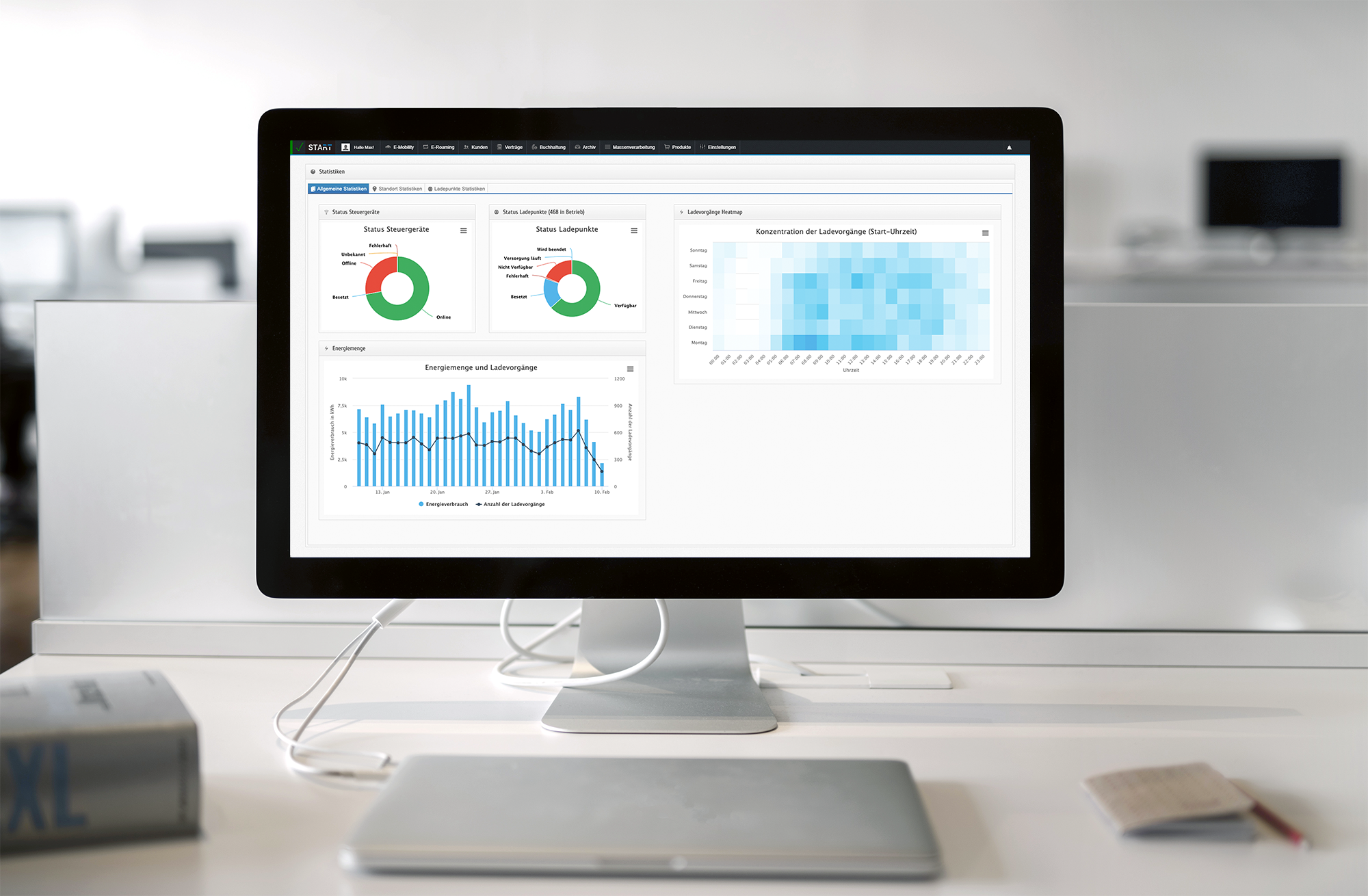Blog
What is a Charge Point Management System and why is it needed?

Learn how you can monitor and manage your charging infrastructure remotely with a charge point management system.
Whether you manage business, public or home chargers, the more charging stations you install, the more complex your business model becomes.
While ten charging stations for an electric fleet might be easy to manage, what happens when you add another location? Or when you’d like your team to be able to charge at home as an employee benefit? This is when an Excel sheet may no longer be sufficient to keep track of your chargers and transactions.
The limited scalability of spreadsheet-based solutions and standard CRM systems is one of the reasons why medium-sized and larger charge point operators use specialised software, also known as a charge point management system, to monitor and manage their charging networks.
What does a charge point management system do?
Charge point management software (CPMS) simplifies charge point operations by representing an entire charging network digitally and managing communications and data exchanges with individual charging stations.
A CPMS allows e-mobility specialists to see all connected charging stations and manage processes, such as pricing, invoicing and troubleshooting hardware faults remotely and at scale.
Roaming, customer relationship management and tariff-setting
Charge point management systems allow e-mobility companies to steer the use of their charging infrastructure. For example, if drivers on another network should have access to a particular charging station with their default charging card, the software can facilitate this via roaming contracts with mobility service providers.
A CPMS also allows businesses to group customers according to specific criteria, including their charge card provider, company membership and many others. These criteria can then be used to determine who has access to specific charging stations, tariffs, and payment options.
Charge point operators can also set different tariffs based on the location or group that a charging station is in or the time-of-day that it is accessed. An inner-city charging station may for instance, offer more expensive tariffs during the day than at night, while charging stations in rural areas may generally offer lower rates than those at highly frequented locations.
Perhaps employees should be able to pay for charging with their company access card? Or EV drivers with charge cards from partners should benefit from reduced rates?
These rules and exceptions can all be set up via a charge point management platform, allowing you full flexibility in designing your charging offering.
Billing and Payment Processing in EV charging
As you operate more charging stations, it becomes more and more convenient to have an automated system for billing charging sessions. A good charge point management platform allows charge point operators to automatically generate and send invoices for charging sessions based on pre-defined templates. Some charge point management systems can also automatically process payments and send notices for unsettled payments.
How CPOs benefit from a charge point management system
Charge station operators can use a CPMS to optimise the management of their charging infrastructure. A good charge point management system increases the security, reliability and scalability of your charging network and lets you maximise your ROI from charge point operations.
Managing charging networks at scale
Charging management software allows operators to monitor and operate charging stations across multiple locations and hardware brands.
It enables the rapid growth of charging networks, as you are independent of hardware manufacturers and can easily overcome logistical hurdles at your locations. Charging management software automates complex processes, allowing you to seamlessly scale your charging network and expand to new locations in a cost-effective way.
Reliable network operations
Thanks to the monitoring capabilities of charge point management software, charge point operators can see the status of charging stations in real-time and remotely identify and troubleshoot faults. This makes it easy for technicians to resolve issues, thereby limiting downtime and reducing costs for maintenance and fault resolution.
Customer support teams can also use the available information to let drivers know about any issues and support them with problems they experience, thereby increasing driver satisfaction.
Secure charge point operations
A cloud-based charge point management system makes it easy to operate a charging network securely. It allows you to install firmware updates remotely, keeping chargers running on the latest software version and thereby closing common security vulnerabilities.
Access to your charge point management system can be limited to a select group of people within your organisation, while your data can be stored securely on servers across multiple data centres. This protects you as an operator from unforeseen data loss and makes it easy to comply with legal requirements in your jurisdiction, such as the General Data Protection Regulation (GDPR) in Europe.
Note: Charge point operators should confirm whether secure transmission and data processing is guaranteed by their charge point management software, so they can comply with the appropriate legal regulations. For European companies we recommend that data be hosted within the European Union only.
Charge point management software can offer many benefits beyond increasing the scalability, reliability and security of charge point operations. However, each platform has its unique strengths, and each charge point operator may have slightly different requirements.
If you’re planning to scale your e-mobility business, please get in touch to learn more about chargecloud’s charge point management system and how we can help you streamline your charging operations.
